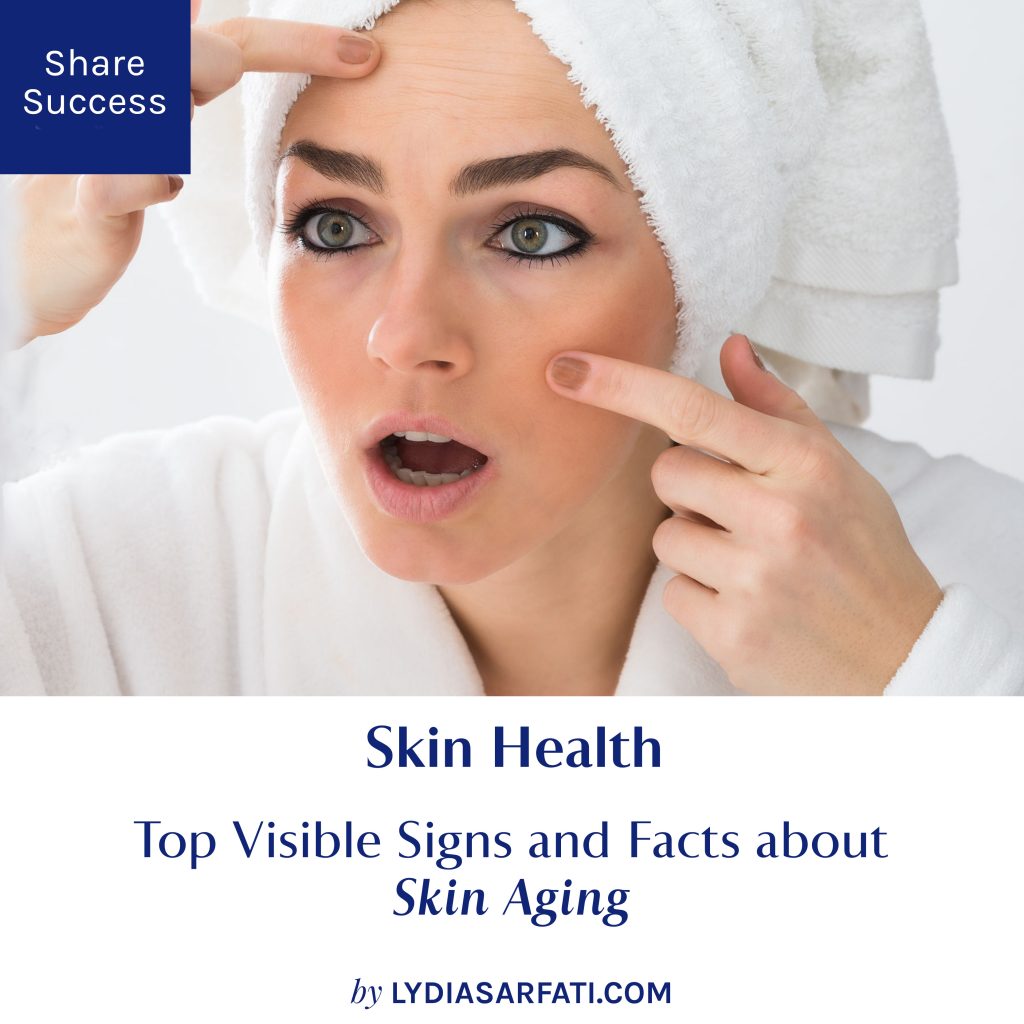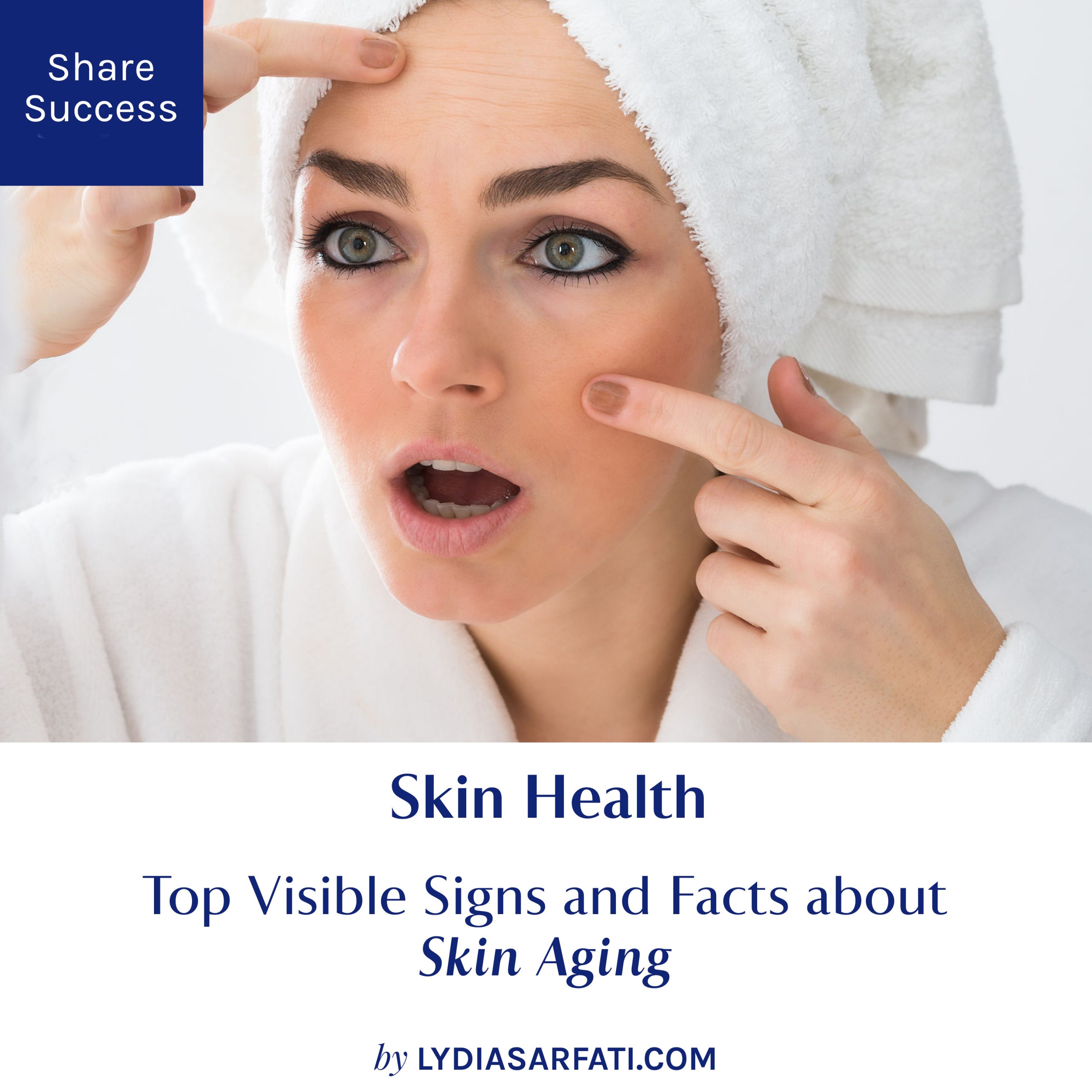
The global anti-aging market is expected to reach an estimated $66.2 billion by 2023¹. And perhaps the reason why this number is so high is that it’s not just the aging Baby Boomers who are investing in anti-aging skin care. Interest in anti-aging skin care is starting earlier and earlier, including millennials.
And it makes sense why it should be – our skin begins aging the moment we are born.
What is important to understand is the rate at which one ages varies from person to person. Genetic factors, environmental effects, and whether or not one invests in proper skin care make all the difference.
Here I’m sharing the characteristics of aging skin and what happens to your skin as you age.
The Characteristics of Aging Skin
Young skin is supple and smooth, firmly draped over the underlying structures of the face. Aging skin or sun damaged skin is different from youthful, beautiful, healthy skin.
The differences are appreciable, made evident in the appearance of:
- Moisture loss and dryness
- Fine lines
- Deep lines
- Thinning of the epidermis
- Color and texture difference from irregular desquamation
Aging Skin – Collagen, Elastin, and the Sun
Skin is a composite tissue, consisting of a fibrous matrix containing elastin and collagen. Collagen provides strength to the skin structure and elastin provides the snap or resiliency, allowing the skin to move about and assume conformational changes as required. When the elastin fibers undergo changes that cause them to lose their resiliency or snap, the skin no longer is able to return to its original state. As a result sagging and crinkling occur in a pattern that manifests as wrinkles.
The skin is an excellent record keeper. Every moment we spend in the sun adds up to incremental damage like money in the bank. Ultraviolet rays generate free radicals that wreak havoc on cellular material. They are capable of altering not only the DNA but they may also effect membranes surrounding the skin cells, destroying or altering enzymes and proteins required for cellular metabolism and affecting amino acids. With age and increases in accumulation of UV radiation, the dermal matrix becomes damaged and disorganized. The amount of collagen decreases, elasticity is compromised and the skin becomes thin, less firm, allowing wrinkles to develop.
When sunlight strikes the skin some of the rays are reflected, some are scattered and others are absorbed. Absorption of UV and visible light occurs due to melanin granules in the epidermal cells. Melanin is present to protect the skin from damaging effects of sunlight. Exposure to sunlight, especially UVA and UVB radiation, stimulates the production of melanin resulting in a pigmentation increase. Melanocyte hyper proliferation causes age spots. Melanin pigments are derivatives of the amino acid Tyrosine. An increased production of melanin in the skin is call melanogenesis. This process is stimulated by DNA damage to the skin induced by UVB radiation. Tyrosinase is an enzyme that catalyzes the production of melanin and other pigments from tyrosine by oxidation.
What Happens to Your Skin As It Ages
- The average moisture content of the stratum corneum is slightly decreased.
- Drier skin manifest in fine lines.
- The epidermis thins out.
- The dermal papilla, which is the anchor of the epidermis, flattens out, resulting in loose, tissue-like texture.
- Cell renewal rate slows down, making healing slower.
- Circulation is impaired.
- Desquamation becomes uneven, affecting the evenness of skin tone.
- The optical characteristics of the stratum corneum, its color and its translucency change, becoming more opaque and move from pink toward yellow and grey.
- Environmental exposure and changing metabolism impact the structural proteins making skin less elastic and less firm.
- A lifetime of repeated movement results in “expression lines” around the eyes and mouth.
- Wrinkle’s form at the dermal layer of the skin due to a degradation of the elastin structure.
- Elastin loses its “snap”, allowing skin to become more lax and loose looking.
Signs of skin aging can be begin in as early as your 20’s, and will continue throughout each decade of your life.
Learn about our new Vita Cura Gold Collection for aging skin as well as our Vita Cura B3 Lifting Treatment.
Make sure you also visit the homepage and subscribe to my blog, as I will share how to address visible signs of skin aging at all ages and the best natural ingredients for visible signs of skin aging in the coming weeks.
*This blog is for informational purposes only and is not intended as medical advice, treatment or diagnosis. Always seek the advice of your doctor or health provider with any questions or concerns you may have about a medical condition.
1. https://www.researchandmarkets.com/research/csw37z/antiaging_market?w=5
